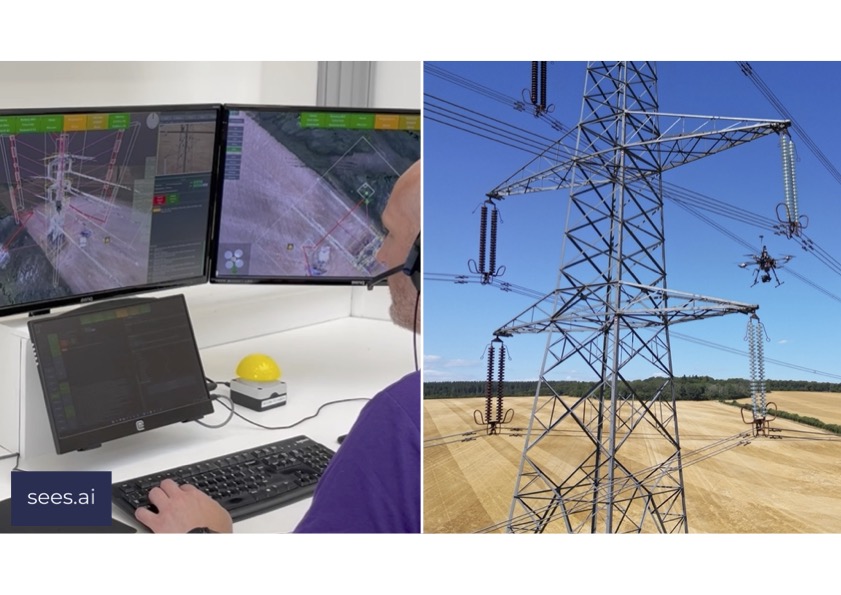Boeing-backed autonomous flight technology developer, sees.ai, becomes the first company in the UK to secure routine permission from the Civil Aviation Authority (CAA) to fly drones Beyond Visual Line of Sight (BVLOS) in non-segregated airspace, on the high voltage electricity transmission network.
This permission builds on the BVLOS permission that sees.ai received in April 2021 which allowed the company to remotely operate drones in non-segregated airspace over industrial sites. This new permission now allows routine BVLOS flights on two specific runs of National Grid Electricity Transmission (NGET) live overhead power lines – an interim step that will allow sees.ai to demonstrate the safety of extending this permission to NGET’s critical national infrastructure.

This permission means sees.ai is now one of only a handful of companies worldwide with routine permission to inspect the grid from BVLOS; and perhaps the only company worldwide capable of enabling close inspection, the most valuable inspection regime. sees.ai’s core tech enables drones to be flown meters from steelwork and components from BVLOS to capture a structured, internally georeferenced data set of 2D images and 3D models optimised for automated analysis using AI.
This permission achieves an important milestone in the development of an end-to-end automated inspection analysis and reporting solution for electricity grids – a project that sees.ai and NGET’s data analysis supplier, Keen AI, have been working on with NGET since mid 2021. The aim of this project is to enable NGETs in-house team to carry out close aerial inspection of overhead lines from BVLOS using sees.ai’s core tech; and then to use Keen AI’s software for condition assessment, defect resolution and reporting. This project will enable NGET (and other grid operators in time) to more efficiently and effectively determine asset conditions and develop optimal maintenance plans.
In order to ensure the safe development and deployment of their core tech, sees.ai has been working closely with the CAA Regulatory Sandbox team since 2019. Recently the company has made progress towards licensing their core-tech via this project with National Grid and a second with Marshall Futureworx; and via two UK Government Future Flight Challenge projects, in which sees.ai led consortia that included partners National Grid, BT and Network Rail.
John McKenna, CEO of sees.ai said:
“Securing permission to carry out BVLOS drone inspections of the live electricity grid is a major step forward towards our goal of enabling safe operation of drone fleets at national scale. We’re immensely proud that National Grid and the CAA trust us to deploy safely on critical infrastructure and we believe that this permission will pave the way for future advancements in the use of drones for survey and inspection of critical national infrastructure, and beyond into aerial logistics and mobility.”
Sophie O’Sullivan, Head of Future Safety and Innovation at the UK Civil Aviation Authority, said:
‘Everyday flying of drones beyond the visual line of sight (BVLOS) of their operator in the UK will be a significant step forwards in unlocking the full potential of drone technology. This progress in safely incorporating drones into the airspace so they can inspect infrastructure in this way is a key achievement and a major part of our work to support UK innovation.’
Mark Simmons, Condition Monitoring Manager at National Grid Electricity Transmission said:
‘This is a fantastic achievement for sees.ai and an important step in enabling National Grid to
fully exploit the potential of drone technology for network inspections. As we work towards our
net zero goals, embracing technologies like these will enable us to deliver an energy future that
is clean, fair, and affordable for all.’
6 June 2023

